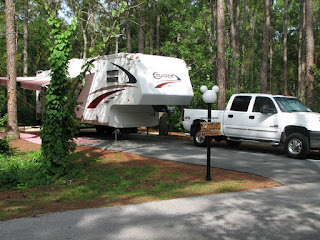Chevrolet 1500: 2013 version of pickup offers the quality look and solid features it’s had for several years
Part 2 of Truck Guy’s 2013 Truck of the Year competition feature’s the 2013 Chevrolet Silverado 1500.
Looks similar for now
Except for a few cosmetic changes, the Silverado has virtually stayed the same since 2007. It has been a successful look for GM and I haven’t heard too many complaints about body styling. In fact, there has been a lot of praise for the design. That said, winds of change are coming for the 2014 model.Interior works
Chevy trucks have long had well appointed interiors. Whether you choose cloth seats or leather you can expect large comfortable seating. The Silverado is no exception. The dash is well laid out and easy to manoeuvre around without distracting you from driving. The centre console is large enough to hold files and also acts as an armrest. The 40/20/40 split-bench front seats are available on the WT , LT and Hybrid models with a 10-way adjustable driver and front passenger seat on the LTZ model. The rear seat is 60/40 split folding and can be found on extended and crew-cab models.Safety a priority
Standard features include dual stage, driver and right front passenger airbag, side head curtain airbags that run the full length of the cab, seat-mounted side impact bags for driver and right front passenger. GM’s OnStar system comes free for the first six months, then available with a subscription after that.Power to spare
No shortage of engines in the 2013 Silverado, with five to choose from. The 4.3-litre V6 with 195 horsepower and 260 lbs.-ft of torque is good on fuel economy and powerful enough to get you to you where you need to go. Next up is the 4.8-litre V8 Flex fuel with 302 horsepower and 305 lbs.-ft of torque. The 5.3-litre V8 Flex Fuel features an active fuel management system, 315 horsepower and 335 lbs.- ft of torque. The 6.2-litre V8 is also Flex Fuel capable and features variable valve timing active fuel management, 403 horsepower with 417 lbs.-ft of torque. The final choice is the 6.0L LIVC V8 Hybrid with electric propulsion system, 300-volt hybrid battery pack and high voltage management module. Its power ratings are 332 horsepower and 367 lbs.-ft of torque. A 4-speed automatic transmission with overdrive and tow/ haul mode come with the 4.3L and the 4.8L, while a six-speed automatic with tap-up/tap-down shift control and tow/haul mode are mated to the 5.3L, 6.2L engines. When properly equipped, this truck can tow up to 4854 kg (10,700 lbs.).Pump frequency:
4.3L 2WD 14.1/10.00 L/100km (city/highway)4.8L 4WD 15.0/11.4 L/100km (city/highway)
5.3L 2WD 15.2/10.6 L/100km (city/highway)
5.3L 4WD 15.9/ 11.2 L/100km (city/highway)
6.2L 2WD 17.0/11.1 L/100km (city/highway)
6.2L 4WD 17.7/11.4 L/100km (city/highway)
Warranty support
Basic three years/ 60,000 kmPowertrain five years/ 160,000 km
Hybrid Components eight years/160,000 km
Comfort for long trips
I drove two models for a week. The first was the 4.3-litre 2WD and the second was the 5.3-litre 4WD . The 4.3L had plenty of power, which came as a pleasant surprise. The move up to the 5.3L wasn’t all that much different but you could feel it on the hills. A little extra horsepower goes a long way. Driving both models with a trailer you can really notice the difference. I like the interiors and have for a number of years although the heavy use of plastic is not appealing but seems to work in the GM products. The seats are comfortable and on long drives this is noticeable — and appreciated. Visibility is good and, as mentioned, the gauges and controls are well laid out.Here’s the verdict
With the competition as fierce as it is in this segment, I think GM should have introduced a new model a little sooner. The technology that I see in other brands is a bit more advanced, but with that said, sometimes it’s not always best to be the first to market.Sticker Price:
WT 2WD Reg Cab $27,205LT 2WD Reg Cab $31,020
WT 4WD Reg Cab $32,405
LT 4WD Reg Cab $36,770
LS 2WD Ext Cab $32,030
LS 4WD Ext Cab $38,875
LT 2WD Ext Cab $36,155
LT 4WD Ext Cab $40,305
LTZ 2WD Ext Cab $44,615
LTZ 4WD Ext Cab $48,815
LS 2WD Crew Cab $34,390
LS 4WD Crew Cab $40,490
LT 2WD Crew Cab $37,820
LT 4WD Crew Cab $41,970
LTZ 2WD Crew Cab $45,770
LTZ 4WD Crew Cab $50,130
Article written by: Ian Harwood - "The Truck Guy"
Corporate Sales and Operations Manager for Custom Truck Parts









